CHANG GUNG MEMORIAL HOSPITAL
No. 5, Fuxing St., Guishan Dist., Taoyuan City, 33305, Taiwan
About us
Chang Gung Medical Foundation
Chang Gung Memorial Hospital offers the largest and most comprehensive health care services in Taiwan, comprised by a network of 7 hospital branches located in Linkou, Taipei, Taoyuan, Keelung, Yunlin, Chiayi, and Kaohsiung.
1. Our hospital network contains over 10,000 beds.
2. We receive an average of 8.2 million outpatient visits every year.
3. At least 2.4 million are hospitalized at our facilities every year.
4. We receive an average of 167,460 surgical patients every year.
5. It is estimated that a third of the Taiwanese population have sought treatment at Chang Gung.
Moreover, Kaohsiung Municipal Fengshan Hospital and New Taipei City Tucheng Hospital entrusted Chang Gung Medical Foundation to management.
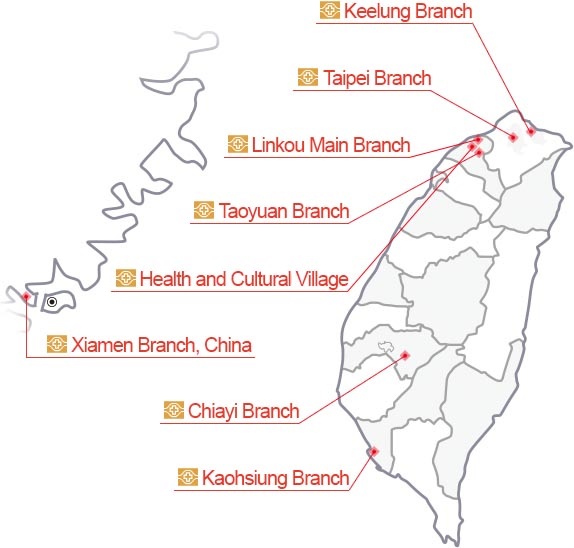
Our health care system is also further consisted of Chang Gung University, Chang Gung University of Science and Technology, Acute Hospitals, Chronic Hospitals, and Chang Gung Nursing Home, and Chang Gung Health and Culture Village.
Linkou Chang Gung Memorial Hospital
Founded in 1978, Linkou Chang Gung Memorial Hospital (CGMH) has been listed among one of Taiwan's largest, most prestigious, medical and educational centers, containing nearly 4,000 beds and a total of 29 specialty centers. Up to date, the hospital has trained more than 1,700 practicing physicians from 75 different countries in the last decade. Not only does the hospital account for almost 10,000 out-patients a day, but it also receives the highest number of international patients in Taiwan, treating over 10,000 patients a year.
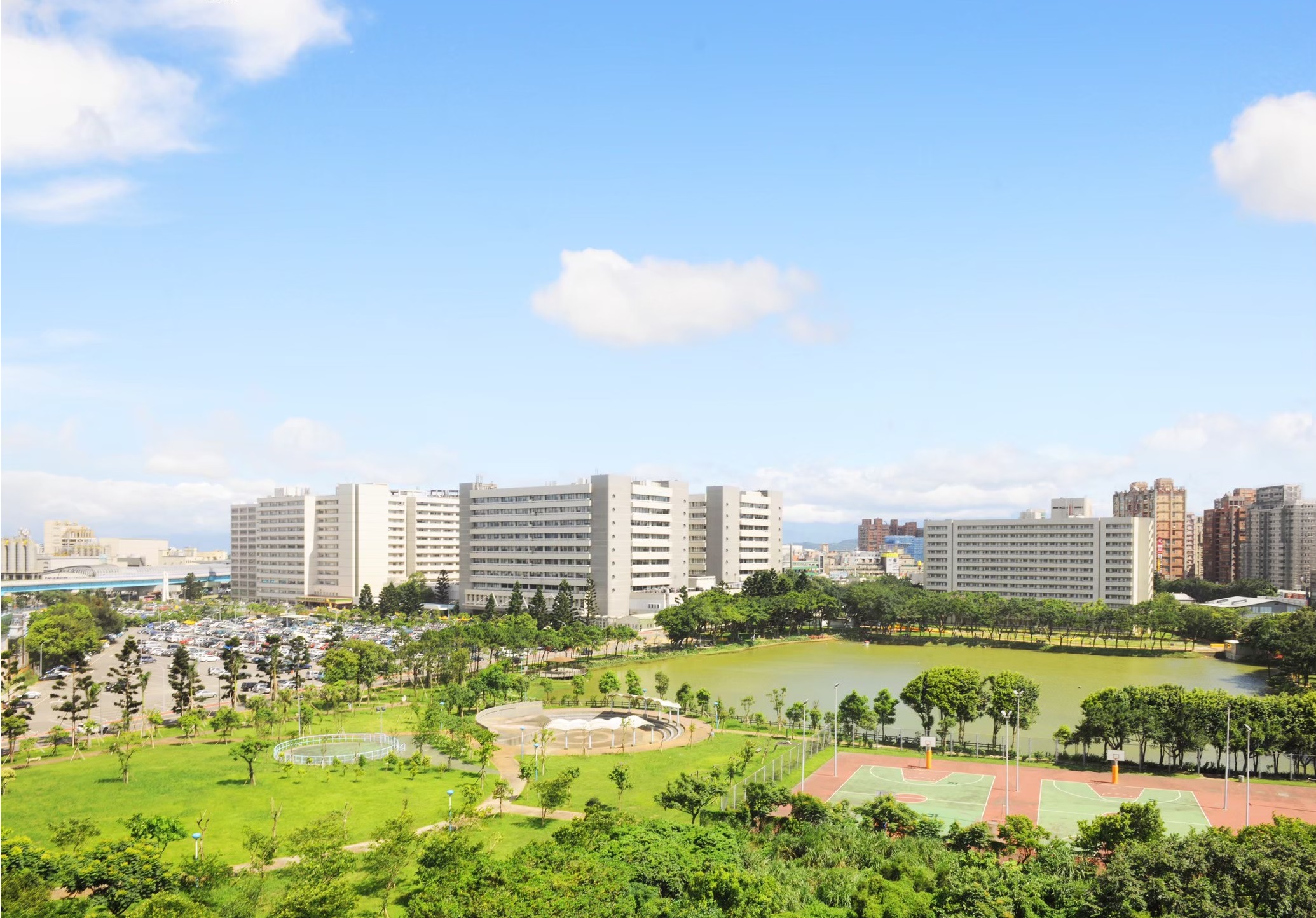
Joint Commission International
CGMH has been recognized as a powerhouse and pioneer in remedial innovation, research and teaching. It is also the largest academic center ever accredited by the Joint Commission International [JCI (2014-2017)]. Having been featured in National Geographic Channel's documentary, "Taiwan's Medical Miracle," our hospital's medical achievements are both nationally and internationally acclaimed. At Chang Gung Memorial Hospital, we prioritize patient-centered care, offering domestic, as well as cross-border, patients with quality medical services, state-of-the-art technology, and superior values.
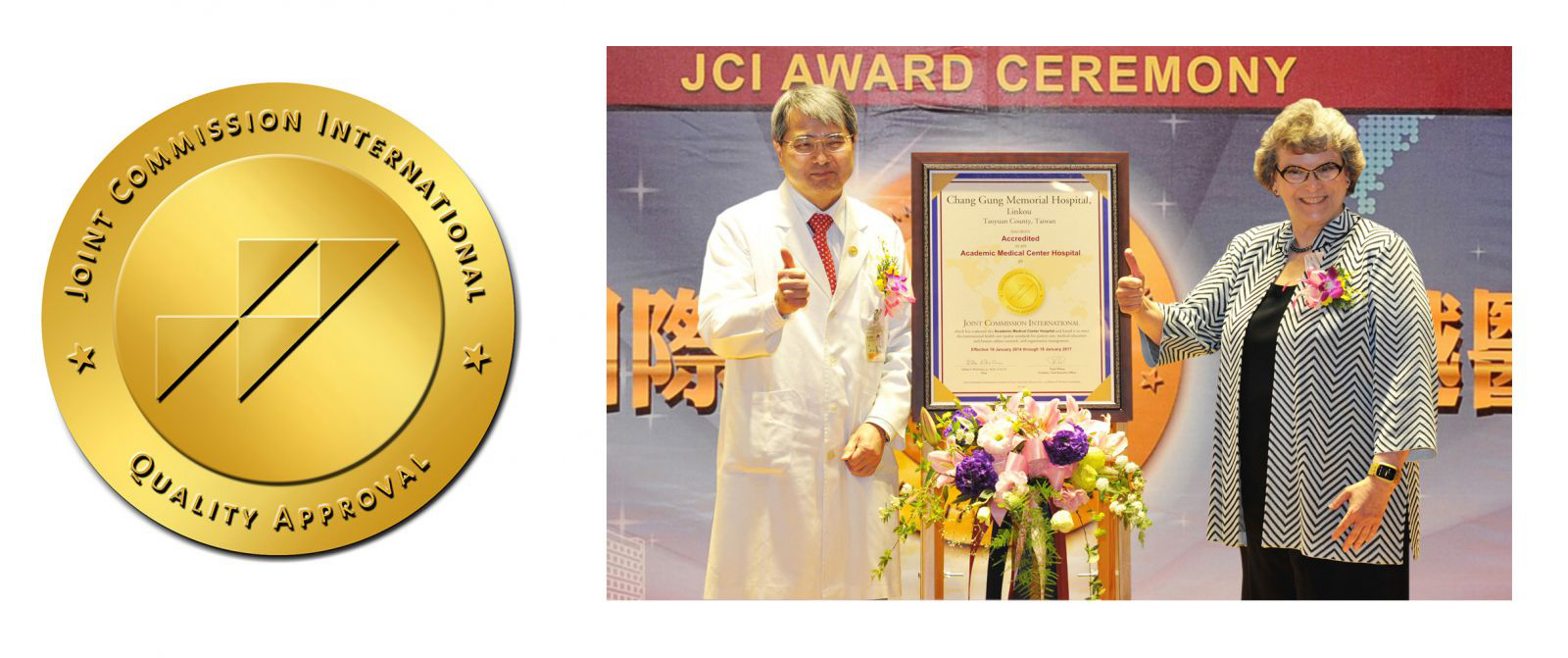
Chang Gung Medical Foundation
Chang Gung Memorial Hospital offers the largest and most comprehensive health care services in Taiwan, comprised by a network of 7 hospital branches located in Linkou, Taipei, Taoyuan, Keelung, Yunlin, Chiayi, and Kaohsiung.
1. Our hospital network contains over 10,000 beds.
2. We receive an average of 8.2 million outpatient visits every year.
3. At least 2.4 million are hospitalized at our facilities every year.
4. We receive an average of 167,460 surgical patients every year.
5. It is estimated that a third of the Taiwanese population have sought treatment at Chang Gung.
Moreover, Kaohsiung Municipal Fengshan Hospital and New Taipei City Tucheng Hospital entrusted Chang Gung Medical Foundation to management.
Our health care system is also further consisted of Chang Gung University, Chang Gung University of Science and Technology, Acute Hospitals, Chronic Hospitals, and Chang Gung Nursing Home, and Chang Gung Health and Culture Village.
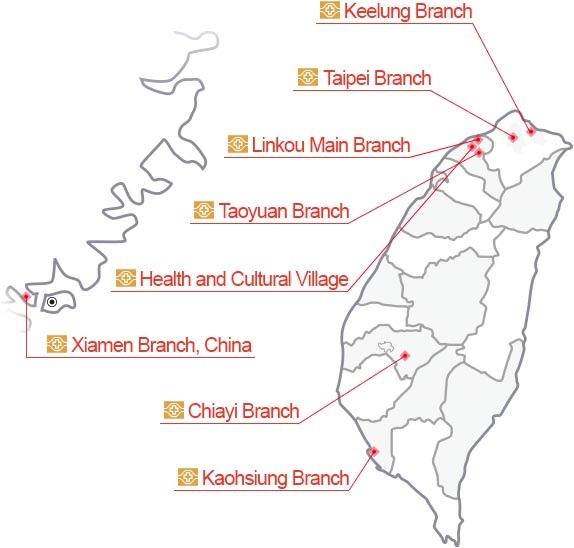
Linkou Chang Gung Memorial Hospital
Founded in 1978, Linkou Chang Gung Memorial Hospital (CGMH) has been listed among one of Taiwan's largest, most prestigious, medical and educational centers, containing nearly 4,000 beds and a total of 29 specialty centers. Up to date, the hospital has trained more than 1,700 practicing physicians from 75 different countries in the last decade. Not only does the hospital account for almost 10,000 out-patients a day, but it also receives the highest number of international patients in Taiwan, treating over 10,000 patients a year.
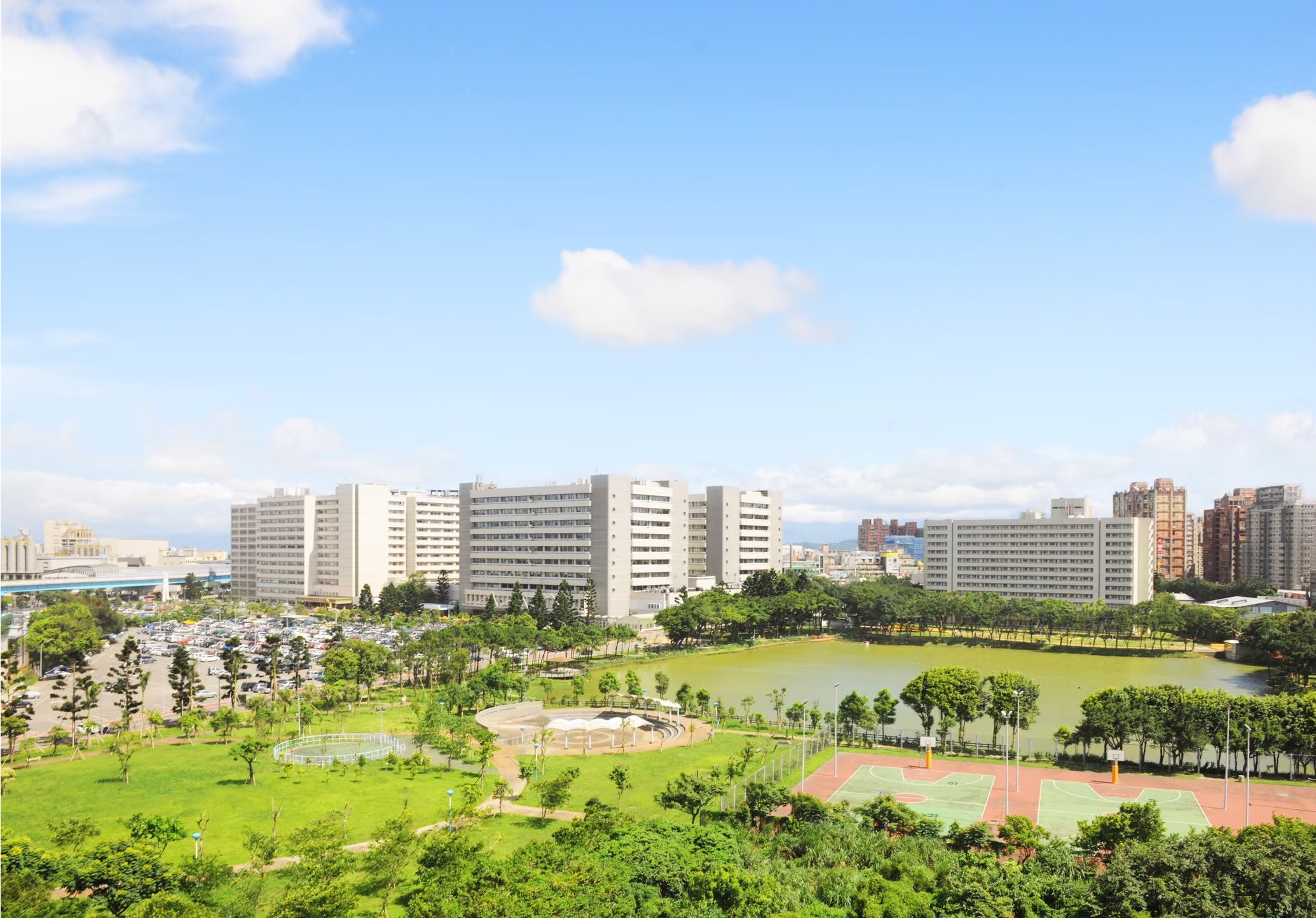
Joint Commission International
CGMH has been recognized as a powerhouse and pioneer in remedial innovation, research and teaching. It is also the largest academic center ever accredited by the Joint Commission International [JCI (2014-2017)]. Having been featured in National Geographic Channel's documentary, "Taiwan's Medical Miracle," our hospital's medical achievements are both nationally and internationally acclaimed. At Chang Gung Memorial Hospital, we prioritize patient-centered care, offering domestic, as well as cross-border, patients with quality medical services, state-of-the-art technology, and superior values.
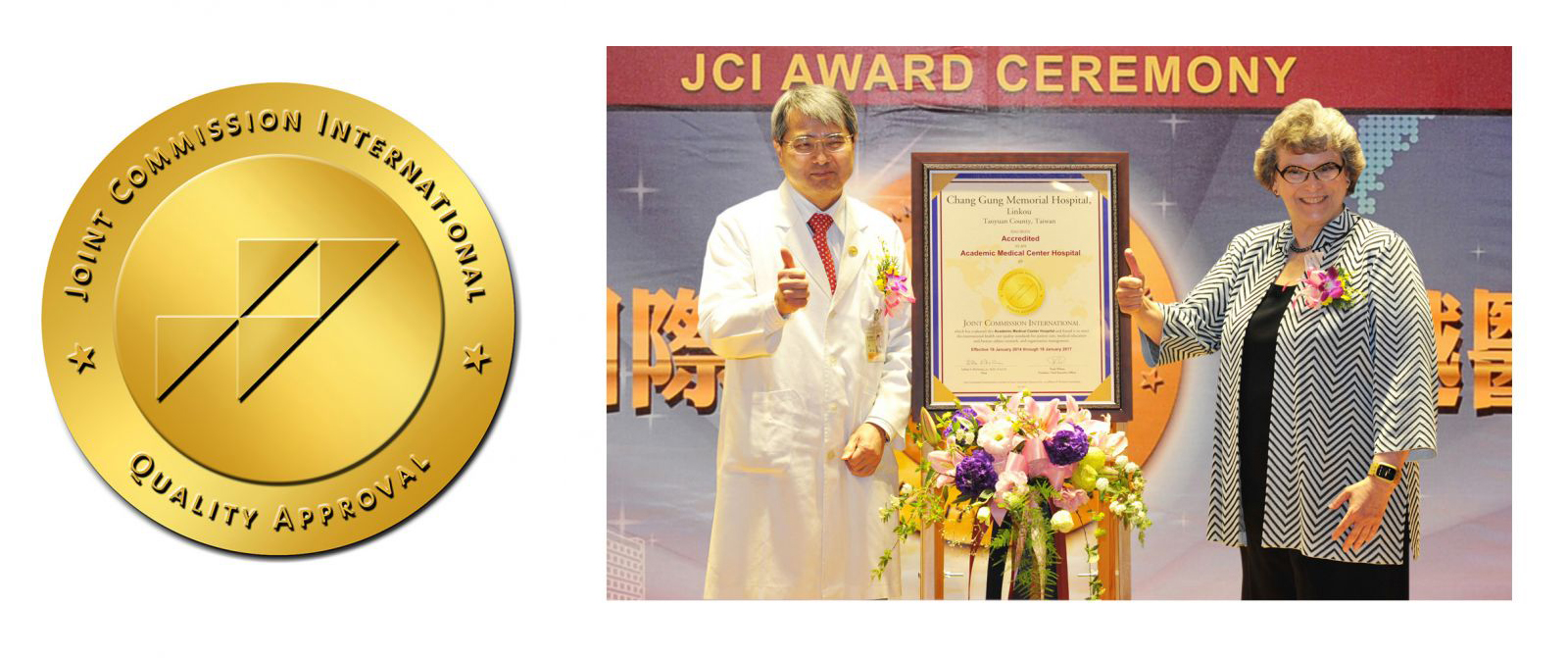
Products
Second Opinion Consultation
CGMH International Medical Center (IMC)
CGMH receives the largest number of international patients in all of Taiwan, treating over 10,000 foreign patients every year. Our International Medical Center can provide fast-tracked services to patients. Our coordinators will be by your side every step of the way, starting from your appointment, all the way to your airport pickup and hotel accommodations.
Second Opinion Requirement
CGMH IMC offers a variety of services including second opinion consultation.
-
Written Consultation
Upon receiving relevant information from you (materials such as medical records, examination reports, X ray reports, or medical reports), our staff at the International Medical Center will forward them to the medical team for analyzation. Then the medical team will provide a formal written Second Opinion Consultation Report for you regarding your condition(s). -
Teleconsultation
Upon receiving relevant information from you (materials such as medical records, examination reports, X ray reports, or medical reports), our staff at the International Medical Center will forward them to the medical team for analyzation. Then our staff will assist you in arranging a medical teleconference time with our doctor(s). -
Imaging Report Consultation
Upon receiving the medical images, or nuclear medical report from you, our medical team will analyze them, and provide an Interpretation Report for you.
Consultation
If you require the consultation service, please contact us via:
-
E-mail: isc@cgmh.org.tw
-
WhatsApp: +886-978-839-600
-
Line / Wechat: cgmhimc
-
Tel.: +886-3-3184301, +886-3-3281200 Ext. 5477 (Office hours: weekdays 08:30~17:30)
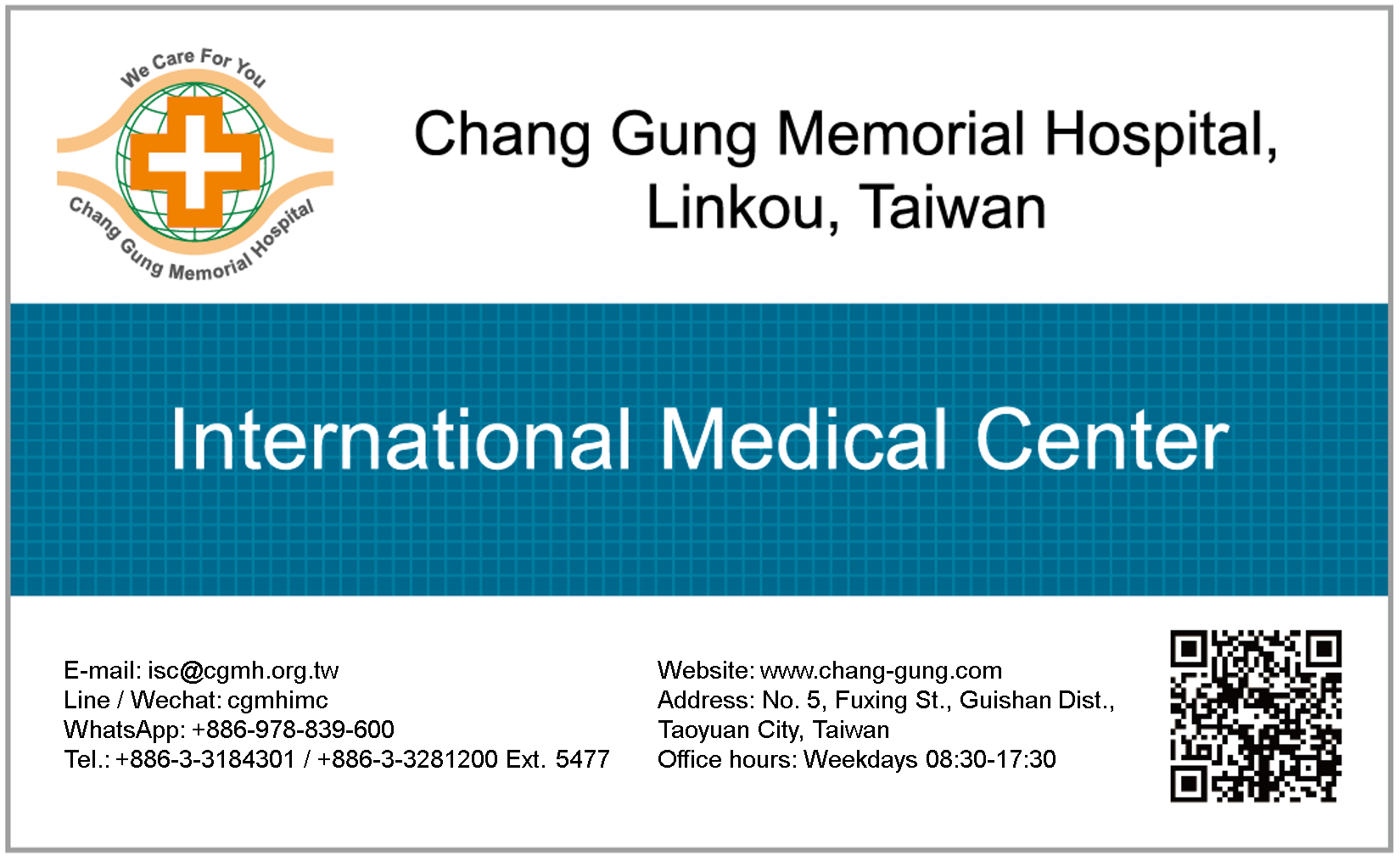

Related Websites
Proton Therapy
Proton Therapy
Proton therapy is currently the most expensive and advanced medical facility in the world. There are 36 proton centers and more than 90,000 cases in the world till late 2012, and the facility and patient number are still booming.
Comparing to the X-ray, the proton passes through tissues with lower entrance dose, but releases large amounts of energy when it reaches the desired depth of treatment (the Bragg peak), and deposits no dose to the normal tissues behind tumor.
Therefore, proton therapy not only attacks tumor precisely but lowers the dose of normal tissue and rate of complication. The proton therapy is shown a better choice in some specific type of tumor.
With proton therapy, for example, the cure rate of skull base tumor, liver cancer, and early lung cancer are higher and the complication rate of pediatric tumor and head and neck cancer are lower.
Potential Benefits
-
Lower radiation dose of normal tissue
-
Fewer treatment-related complication and improving the life quality
-
Lower risk of subsequent tumor caused by the radiation
-
Higher cure rate by increasing the dose to tumor
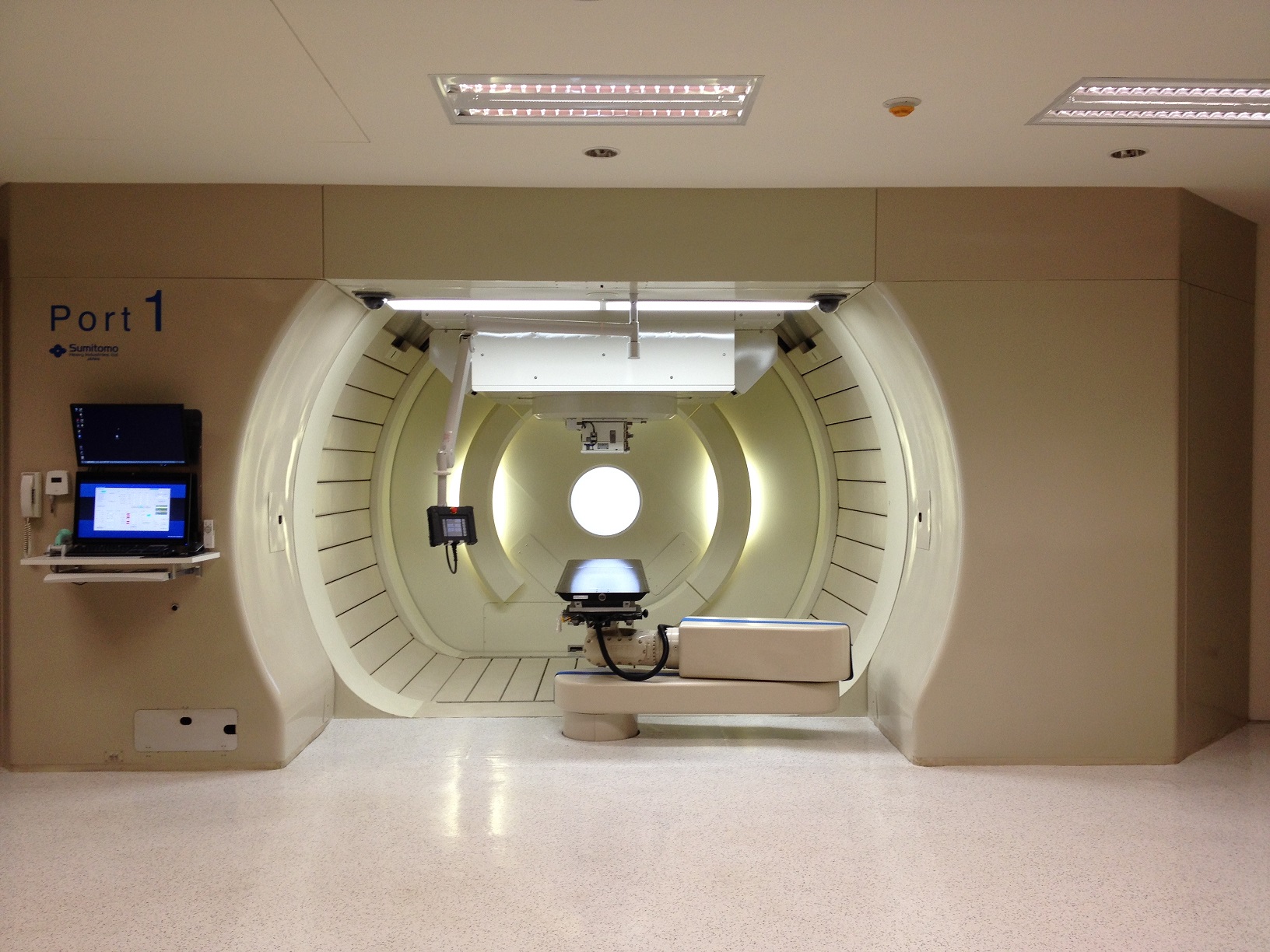
Related Websites
Sympathetic Nerve Reconstruction (SNR)
Endoscopic Thoracic Sympathectomy (ETS)
Approximately 5% of the population in Asia suffer from excessive sweating (hyperhidrosis) in the palms due to sympathetic overactivity. In addition to causing many inconveniences in everyday life and negatively impacting their interpersonal relationships, affected people are also prone to developing skin diseases such as dyshidrosis and miliaria.
Therefore, after the hospital introduced ETS, many people have inquired about the surgical procedure in hopes of solving this annoying disorder. The physical condition of most patients became worse after undergoing ETS surgery to treat palmar hyperhidrosis despite the symptoms having disappeared.
Primary Side Effects Of ETS
-
Compensatory sweating
Mainly occurs in the chest and abdomen, often making it necessary to frequently change clothes when the weather is hot.
-
Impaired thermoregulation
Patients are prone to dizziness, hot head and cold feet, frequent heat stroke, and even heat exhaustion.
-
Other sympathetic dysfunction issues
Including in the heartbeat, blood pressure, breathing, gastrointestinal, urinary, and reproductive systems.
-
Severe emotional distress
Inability to focus, irritability, and antisocial tendencies.
Sympathetic Nerve Reconstruction (SNR)
CGMH "Robotic Sympathetic Trunk Microsurgical Reconstruction" was created with the efforts of the hospital's specialists. According to collected data, all patients showed significant improvement in their symptoms after receiving reconstruction surgery.
The reconstruction surgery is a collaborative effort between different medical fields, with thoracic surgeons who specialize in robotic assisted da Vinci surgery and plastic surgery specialists in microsurgery. The surgeons from these two fields worked together to complete the procedure.
Since the sural nerve of left foot used is a sensory nerve, this procedure may lead to numbness in the heel and instep at first. However, the symptoms would disappear within 6 months and would not have any permanent effect on walking and motor functions. Many patients showed significant improvements in their symptoms after undergoing the da Vinci Sympathetic Nerve Reconstruction.
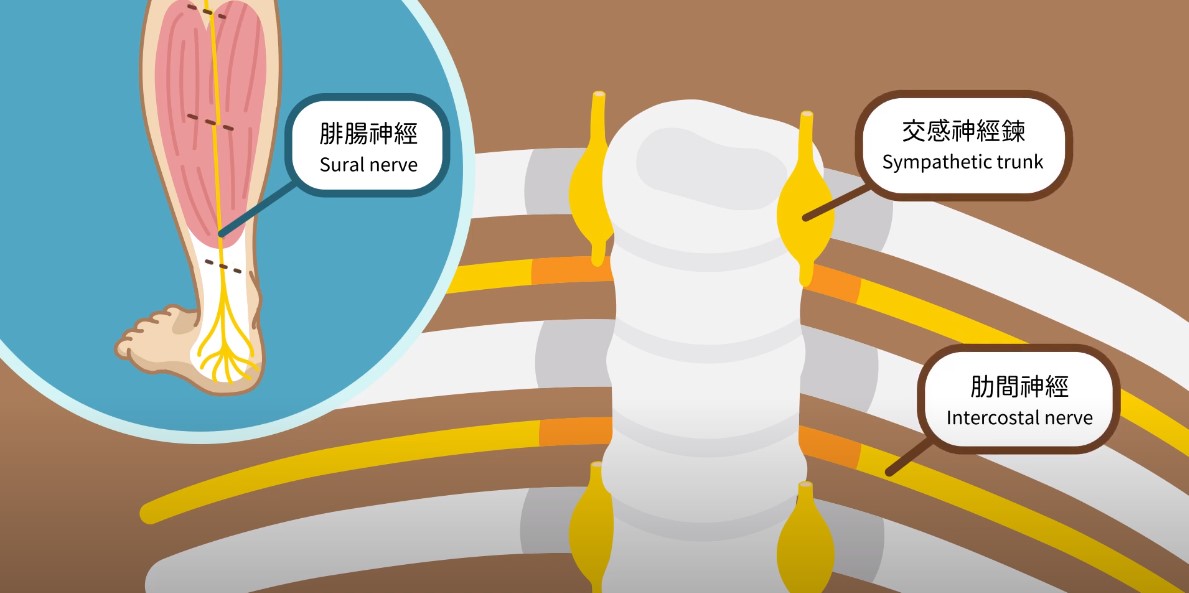
Related Websites
Artificial Joint Replacement
Artificial Joint Replacement
“Artificial Joint Replacement” is a surgery which the worn and damaged articular surface is removed, embeds an artificial joint to restore smooth articular surface.
The hip and knee joints are the largest and most commonly used weight-bearing joints in the human body. Due to aging, trauma or disease, the joints lead to functional defects, which may affect normal life due to pain, and even lead to inconvenience in movement.
If the symptoms continue to occur without any improvement, undergoing an artificial joint replacement becomes the optimal choice for regaining normal mobility.
Indications
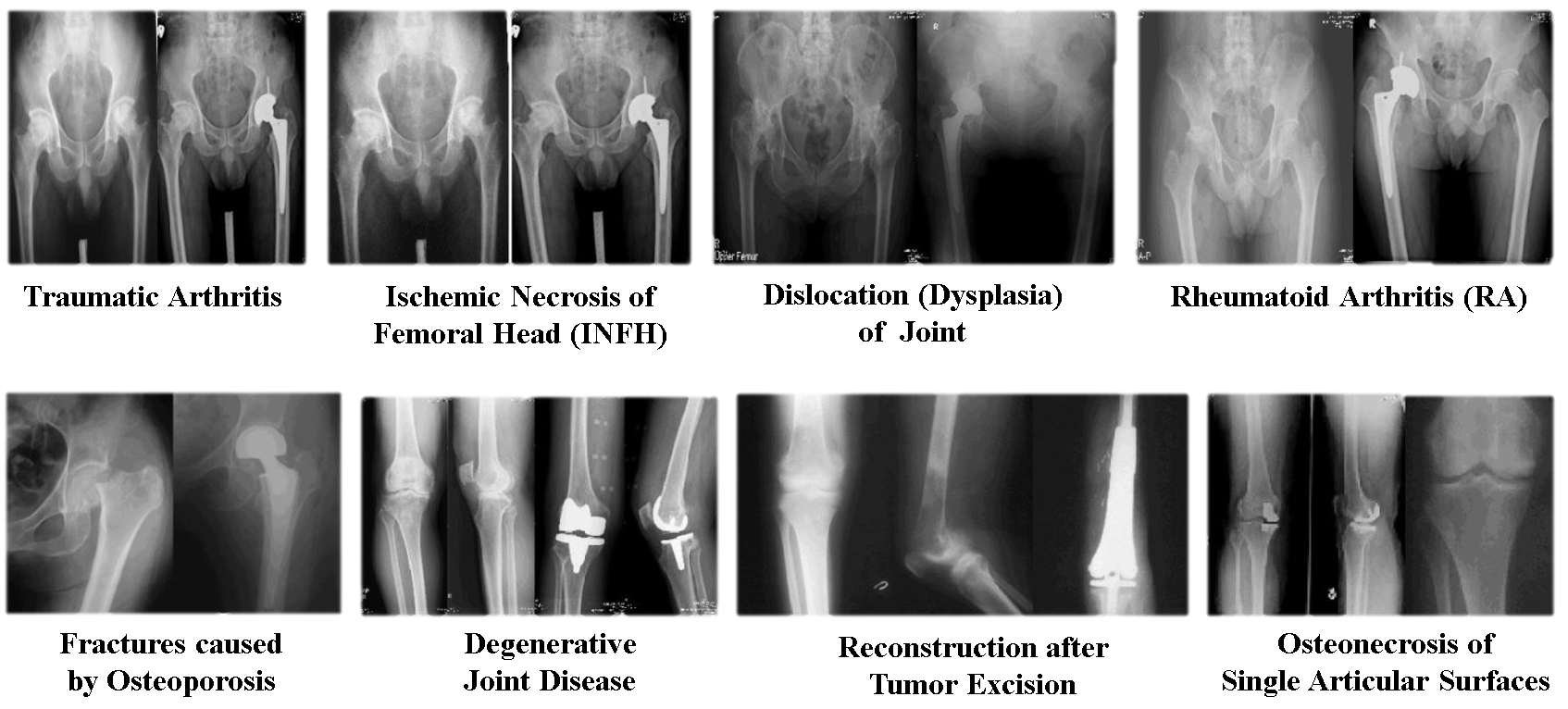
Related Websites
Lymphedema Treatment
Lymphedema
-
Primary Lymphedema
Primary Lymphedema is the result of a hereditary condition that may occur at birth, or develop later in life at adulthood.
It originates when the lymphatic system develops abnormally, preventing the proper flow of lymphatic fluids (clear fluid which contains plasma and white blood cells called lymphocytes that help fight infections and the growth of tumors) to circulate through the bloodstream and body.
This form of lymphatic flow blockage causes subcutaneous tissue fibrosis, hardening of fat tissue, as well as the thickening of the fascia (all of which ultimately lead to the swelling and overgrowth of an individual's subcutaneous tissue and skin) .
-
Secondary Lymphedema
Secondary lymphedema is triggered by damage of lymph nodes caused by non-hereditary means.
Women who have had breast or gynecological related cancers are particularly prone to developing lymphedema due to the excessive damage or removal of lymph nodes during repeated radiation exposure and/ or ablation surgery.
Moreover, certain parasitic infections, such as the microfilaria, found in places like Africa, Southeast Asia, the Western Pacific Islands, and some parts of South America have also been known to cause lymphedema.
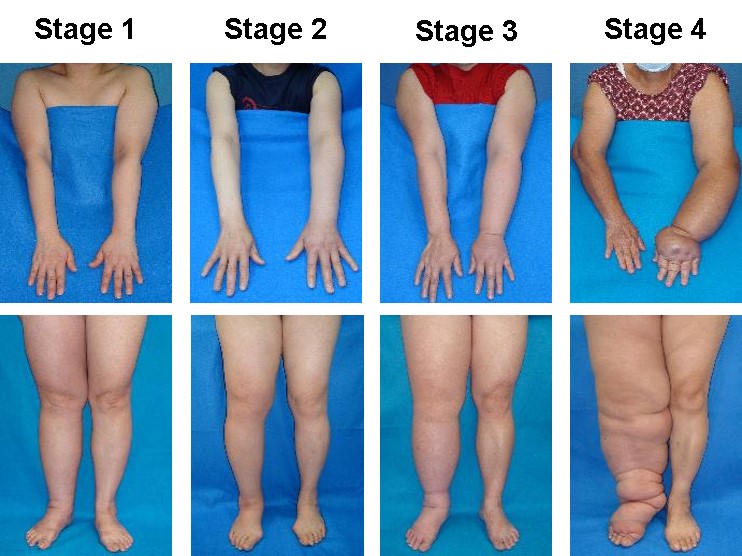
Lymphedema Treatment Center
CGMH's novel surgical techniques have revolutionized the way in which lymphedema is being treated around the world.
CGMH's Lymphedema Treatment Center is the first in the world to introduce Vascularized Submental Lymph Node (VSLN) flap transfer to the ankle and Vascularized Groin Lymphn Node (VGLN) flap transfer to the wrist for the treatment of both primary and secondary lymhedema.
Unlike the conventional treatment methods that often require the use of antibiotics, massage therapies, remedial exercises, compression garments and bandages, VSLN and VGLN surgery creates a natural physiologic drainage conduit to alter excess lymphatic fluid buildup and revert side effects like those of tissue fibrosis and skin swelling.
Holding the best outcome for VSLN and VGLN with an astounding 98% success rate, attracting innumerable medical scholars and patients alike from as close as Korea, Japan, Malaysia and Singapore, and far as North, Central and South America, Canada, Africa, the Middle East and Europe.
Until now, the Lymphedema Treatment center has trained more than 500 foreign fellows and visiting scholars and holds the record for having performed the highest number of VSLN and VGLN operations in the world, with nearly 100 surgeries.
Related Website
Navigation-Assisted Endoscopic Endonasal Surgery
Minimally Invasive Center of Navigation-Assisted Endoscopic Endonasal Surgery
The Division of Rhinology in Linkou CGMH was established in 1996, is the biggest rhinology center in Taiwan. Our division has performed over 25,000 cases since we developed the endoscopic sinus surgery in 1991. In 2007, we developed navigation-assisted skull base and sinus surgery in order to achieve precision, minimal invasion, and elaboration during surgery.
Afterwards, the scope of nasal and sinus surgery gradually developed and expanded, including
-
Navigation-assisted skull base surgery
-
Minimally invasive nasal valve reconstruction
-
Endoscopic minimally invasive nasal septal suturing
-
Functional rhinoplasty
-
Surgical restoration for empty nose syndrome
-
All kinds of endoscopic nasal and sinus tumor resection
-
Repair of cerebrospinal fluid
The effectiveness of these surgeries has been widely confirmed.
Division of Head and Neck Tumors devoted to developing skull base tumor surgery. Those surgical results for such issues as nasopharyngeal cancer, olfactory neuroblastoma, and chordoma all had excellent effectiveness. Furthermore, with well-developed cooperation with the neurosurgery department, we have currently performed more than 100 cases.
Since the Division of Rhinology has collaborated with Division of Head and Neck Tumors, our complex endoscopic skull base tumor resection technique has become more advanced. We are pioneers in endoscopic skull base tumor surgery and will continue to lead Taiwan in this field.
Related Websites
Liver Transplantation
Liver Transplantation
One and only in Taiwan, Kaohsiung CGMH is 1 of the 4 training centers of the internationally renowned Henri Bismuth Hepatobiliary Institute in Asia. At the same time, it is also one of the training centers of the International Hepato-Pancreato Biliary Association (IHBPA) in the world.
Liver Transplantation Center of Kaohsiung CGMH has developed a wide range of medical technology innovations and medical strategy improvements, including:
-
Saphenous vein graft angioplasty
-
Hepatic vein angioplasty
-
Hepatic vein identification strategy
-
Prevention of neonatal hepatitis B virus transmission
-
Innovative medical technology in treating portal vein thrombosis
-
Microsurgical technique establishment
In order to reduce the amount of blood loss to less than 100 ml during liver transplantation, which significantly improve patient safety, reduce surgical complications, and achieve the highest patient survival rate in the world.
As of July 2020, a total of 2,000 liver transplants were performed. The survival rate of patients surpass that of Europe, America, and Japan as the highest in the world.
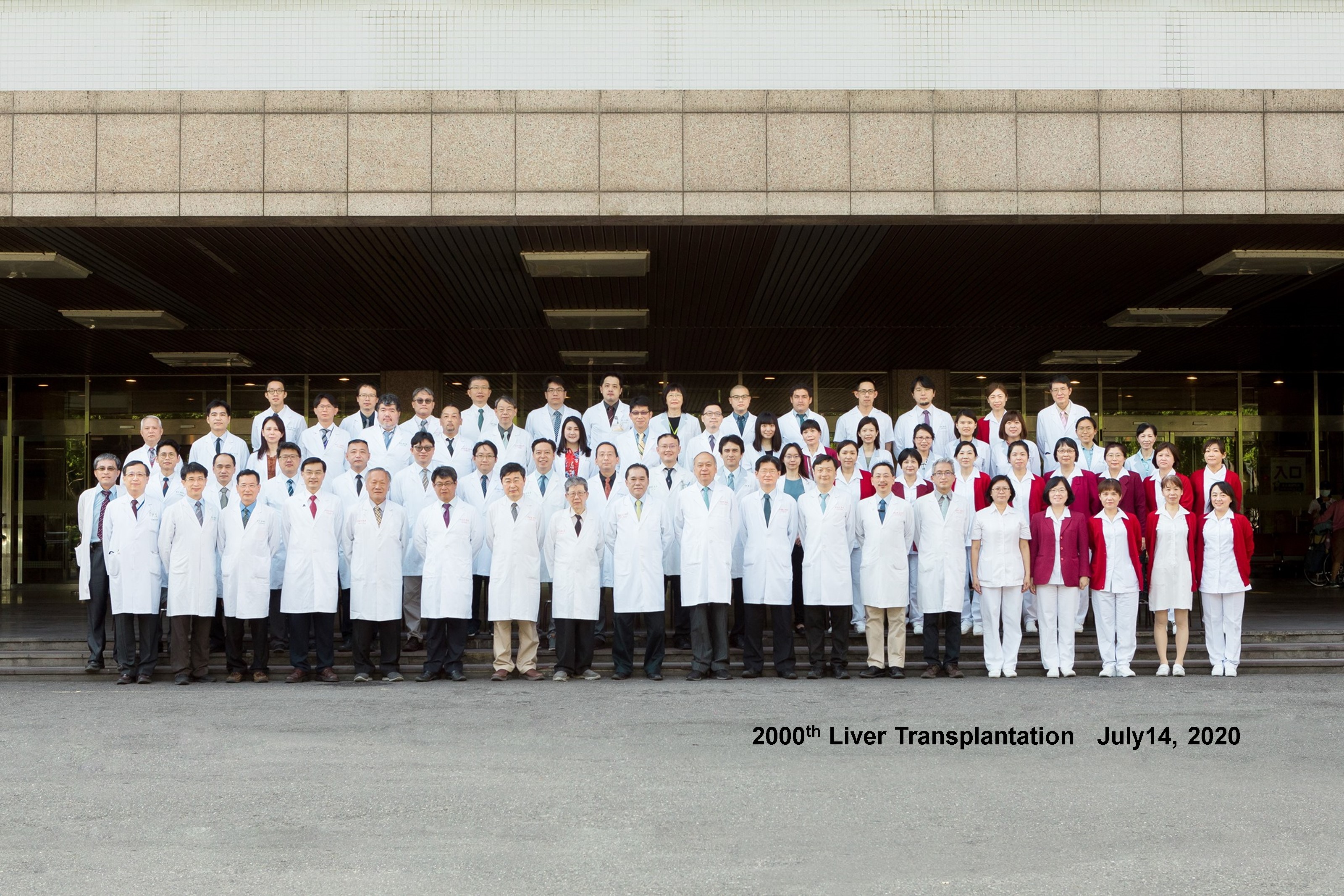
Furthermore, a living donor liver transplant project is published in the transplant medical journal “Transplantation” to confirm Asia's academic achievements and contributions to the living donor liver transplant in the world. Kaohsiung CGMH is listed as one of the top five liver transplant centers in Asia.
Related Websites
Trigeminal Neuralgia
Trigeminal Neuralgia
Trigeminal nerve is the most complex of the cranial nerves, having three major branches: ophthalmic nerve, maxillary nerve and mandibular nerve.
The etiology of trigeminal neuralgia has not been determined, but it is believed that the trigeminal nerve is compression from blood vessel as the nerve enters the brain stem, leading the interruption of nerve conduction.
Due to the symptom of the tooth pain or facial pain, patients visited to the dental clinic and was referred to neurosurgery. It is a severe facial pain and occurs without warning, with shock-like pain in one side of the face that lasts for seconds to a few minutes.
Percutaneous Radiofrequency Rhizotomy
If antiepileptic drug treatment is ineffective or causes side effects, it must be adjusted to the surgical treatment.
Chiayi CGMH has developed a percutaneous radiofrequency cauterizing trigeminal nerve therapy assisted by the high-tech facilities of intraoperative CT, MRI and navigation system.
The doctors use the real-time image during surgery. A fine needle is easily and accurately placed into the trigeminal ganglion to locate the pain target for radiofrequency thermocoagulation.
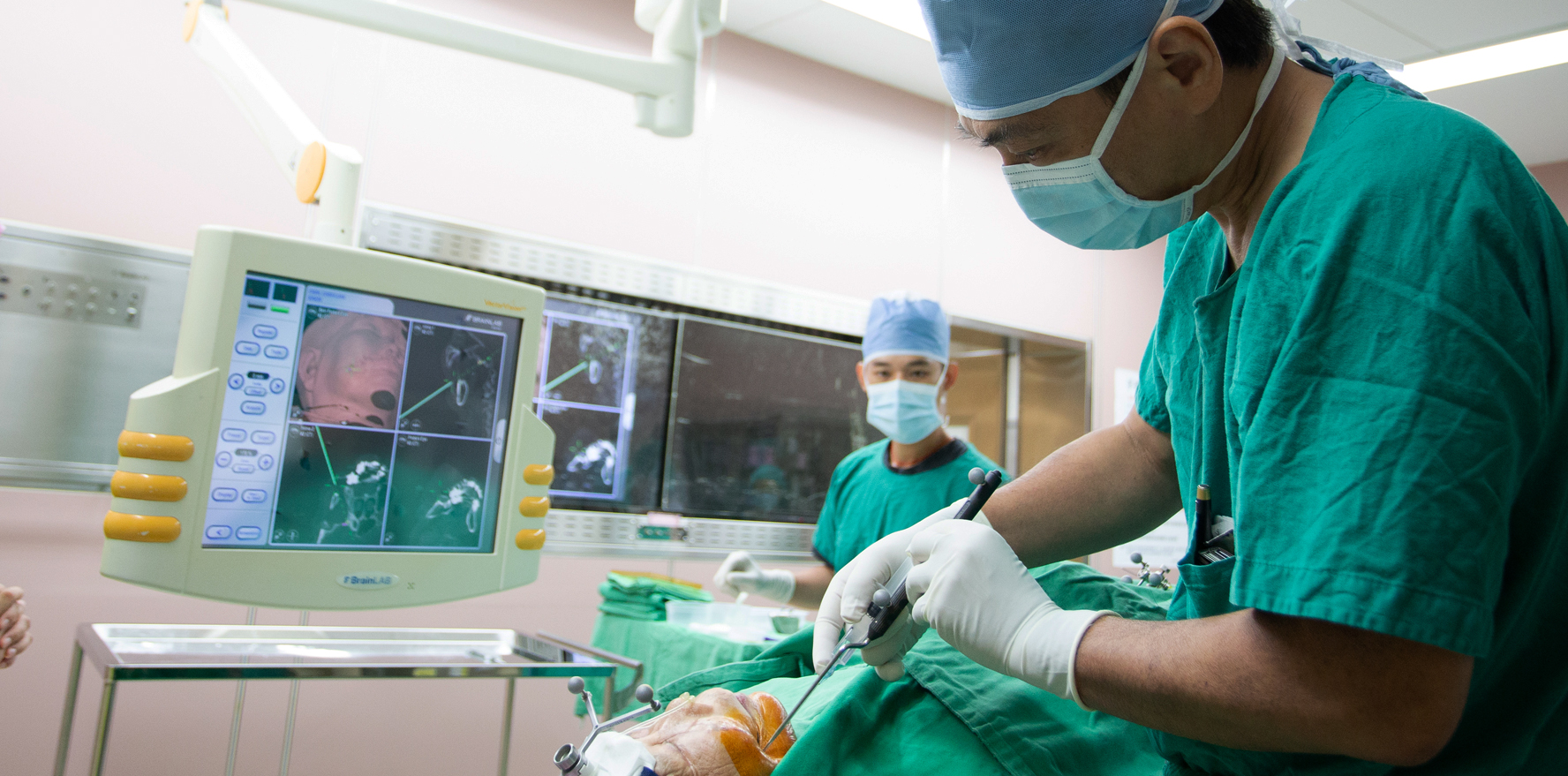
The operative time is only serveral minutes, and no wound is generated. The patient can immediately return home and has normal activity by the end of treatment.
Related Website
Flexible Ureterorenoscopic Lithotripsy
Nephrolithiasis
The most common treatment modalities include:
-
Extracorporeal shock wave lithotripsy (ESWL)
-
Percutaneous Nephrolithotomy (PNL)
-
Ureterorenoscopic Lithotripsy (URS)
Flexible Ureterorenoscopic Lithotripsy (F-URS)
A curved flexible ureteroscope is entered through the urethra (natural hole), with high-power laser to crush and remove the stone in the kidney. There is no wound and the stone clearance rate is good.
Keelung CGMH developed a different method of F-URS operation rather than other countries. Not only the utilization rate of the machine is increased, but the operation time is reduced, and the safety of the patient can be guaranteed.
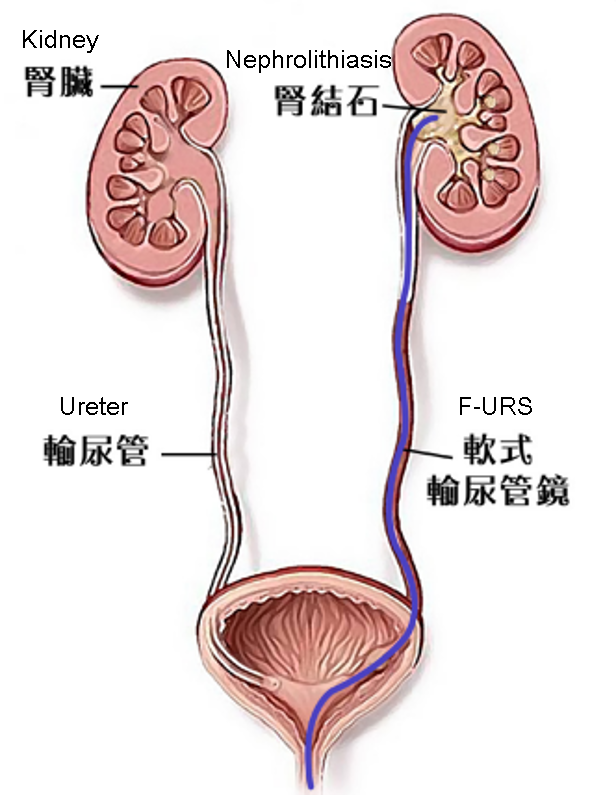
Indications for F-URS:
-
Upper ureteral calculi
-
Nephrolithiasis
-
Internal dilatation of ureteral stricture
-
Biopsy of ureteral or renal urothelial tumors
-
Renal urothelial tumor cauterization
-
Removal of foreign body in renal pelvis